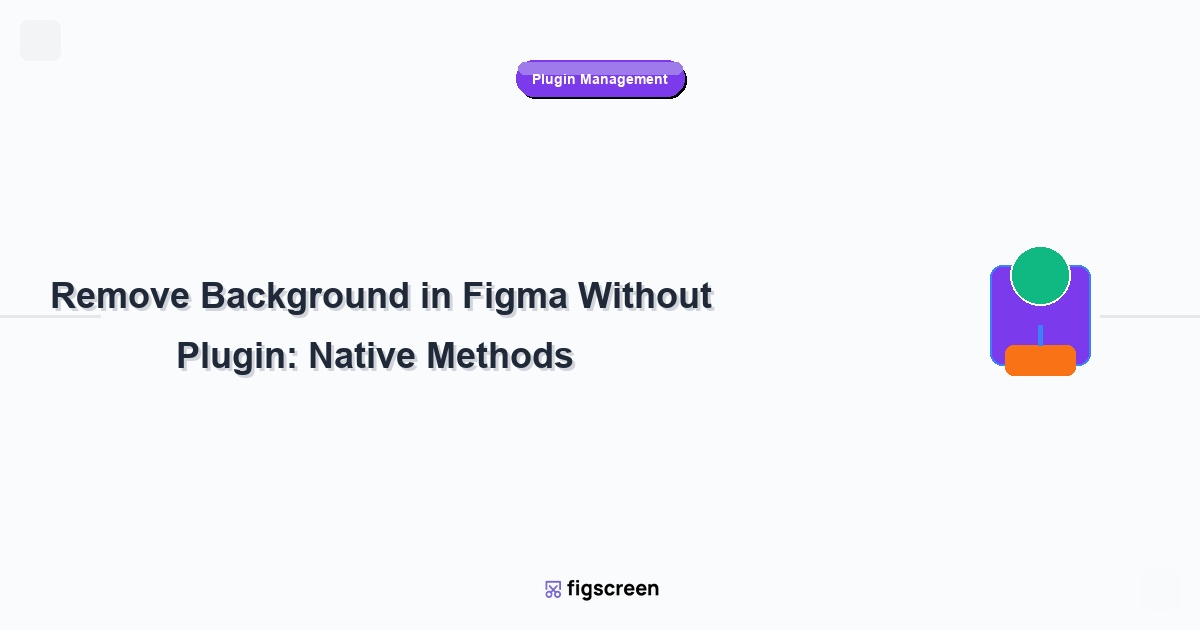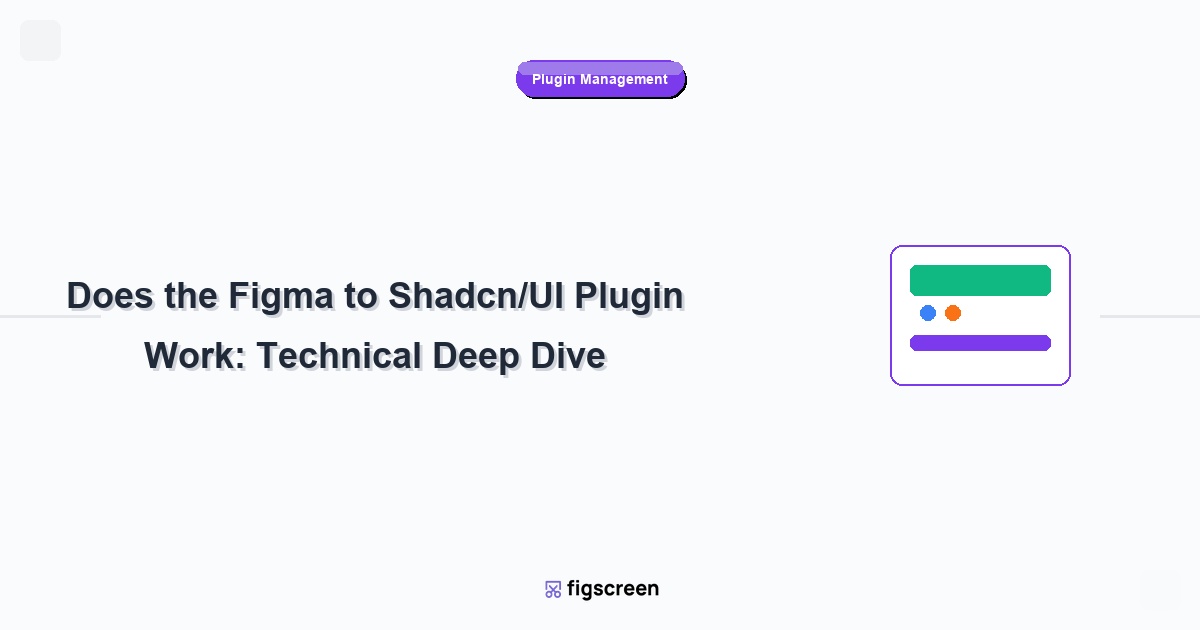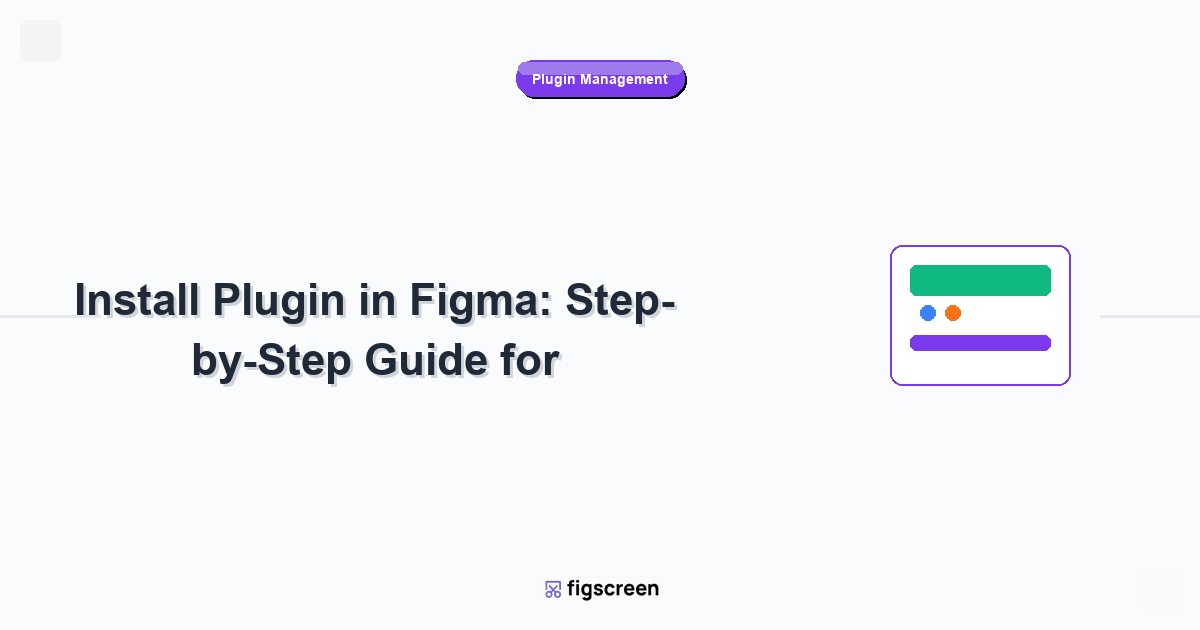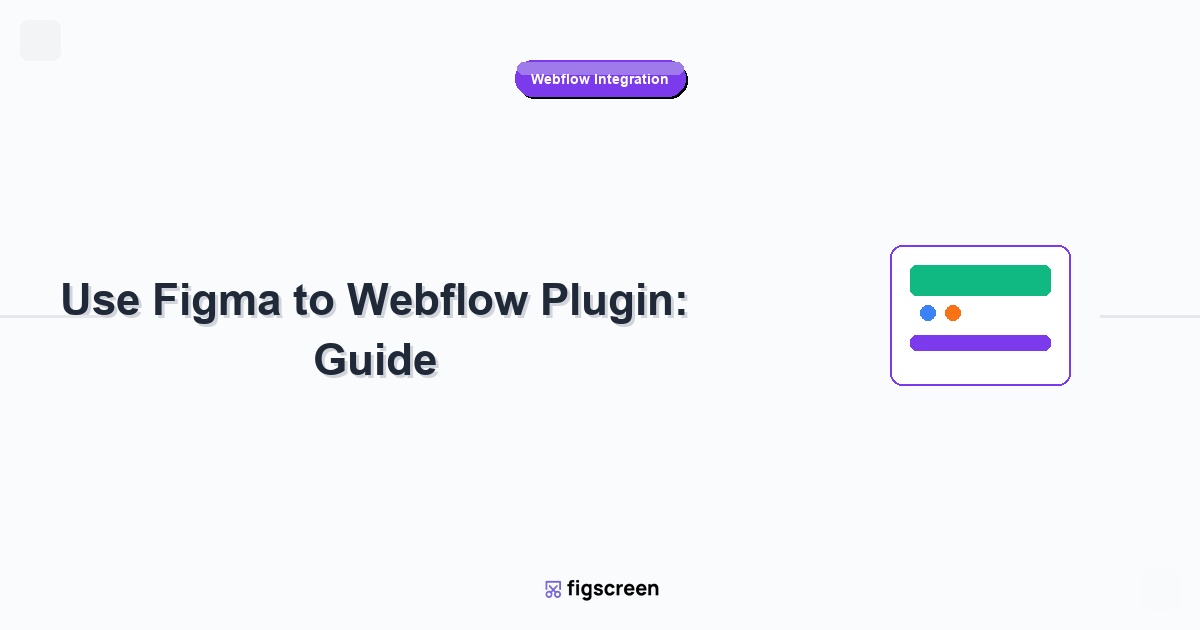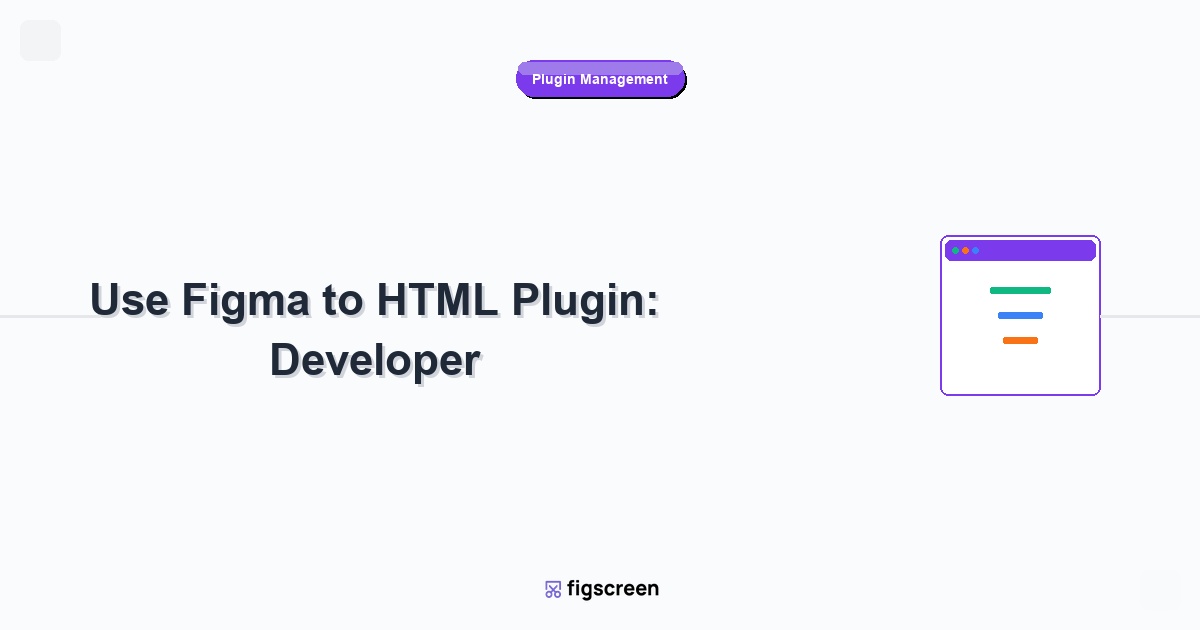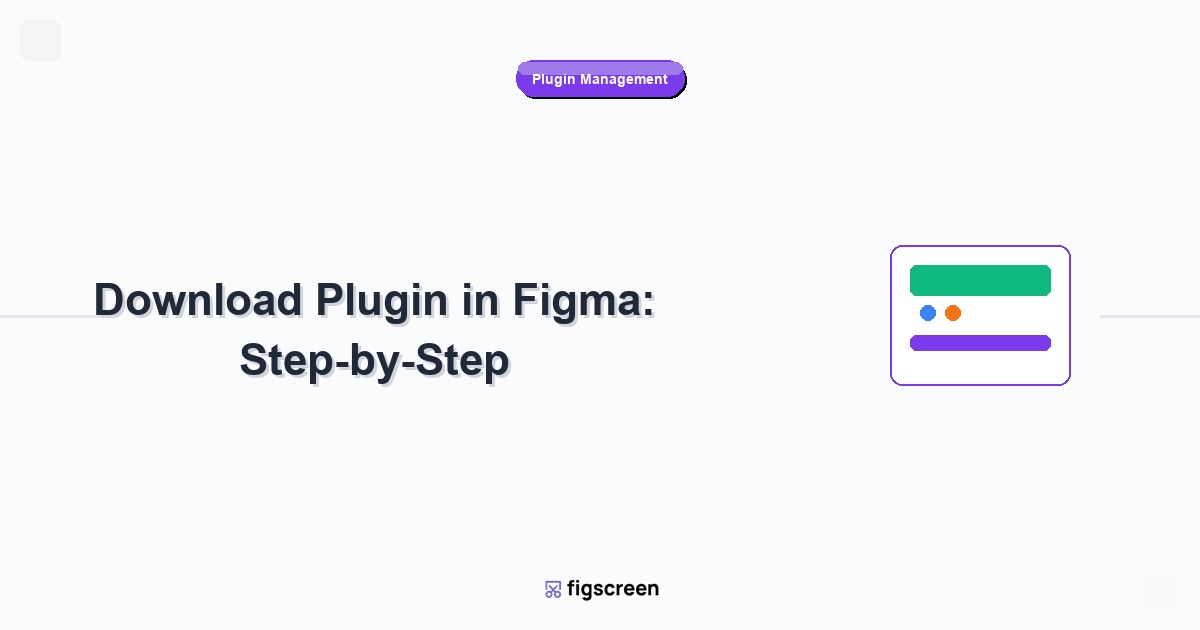While plugins can automate background removal, understanding how to remove backgrounds using Figma’s native tools gives you more control over the process and doesn’t require external dependencies. Whether you’re working in an environment where plugins aren’t available or you prefer manual control for precision work, mastering these native techniques will make you a more versatile designer.
Understanding Background Removal in Figma
Why Learn Native Methods?
Understanding Figma’s built-in background removal capabilities offers several advantages:
- No Plugin Dependencies – Work in any Figma environment without external tools
- Precise Control – Manual methods often provide more accurate results
- Learning Value – Understand core Figma tools and techniques
- Performance – Native tools typically run faster than plugins
- Reliability – No risk of plugin compatibility issues or updates
- Team Consistency – Everyone can use the same techniques regardless of plugin access
Types of Background Removal Scenarios
Different image types require different approaches:
- Simple Backgrounds – Solid colors or simple gradients
- Complex Backgrounds – Detailed textures or patterns
- High Contrast Images – Clear distinction between subject and background
- Low Contrast Images – Similar colors between subject and background
- Transparent Formats – Images that already support transparency
Method 1: Vector Tracing Technique
When to Use Vector Tracing
Vector tracing works best for:
- Simple Shapes – Objects with clear, defined edges
- High Contrast Images – Strong distinction between subject and background
- Logo Isolation – Extracting logos or graphics from backgrounds
- Geometric Objects – Items with straight lines or simple curves
Step-by-Step Vector Tracing Process
Create precise cutouts using Figma’s pen tool:
- Import Your Image – Place the image in your Figma frame
- Lock the Image – Prevent accidental movement while tracing
- Select Pen Tool – Press ‘P’ or select from the toolbar
- Start Tracing – Click around the edge of your subject to create anchor points
- Follow the Contour – Carefully trace the entire outline of your subject
- Close the Path – Complete the shape by connecting back to your starting point
- Create Mask – Use the traced shape as a mask for the original image
Tips for Effective Vector Tracing
Improve your tracing accuracy and efficiency:
- Zoom In – Work at high magnification for precise edge detection
- Use Bezier Curves – Drag handles to create smooth curves instead of many points
- Strategic Point Placement – Place points at corners and curve inflection points
- Adjust as You Go – Fine-tune points and curves during the tracing process
- Work in Sections – Break complex shapes into manageable sections
Method 2: Layer Masking Technique
Understanding Figma Masking
Masking allows you to hide parts of an image without permanently deleting them:
- Non-Destructive – Original image remains intact
- Editable – Masks can be modified or removed later
- Flexible – Combine multiple masking techniques
- Layer-Based – Works with Figma’s layer system
Creating Effective Masks
Build masks that cleanly separate subjects from backgrounds:
- Create Shape Layer – Draw a shape that covers your desired visible area
- Position Shape – Place the shape precisely over your subject
- Select Both Layers – Choose both the image and the shape
- Create Mask – Right-click and select “Use as Mask” or use Ctrl/Cmd + Alt + M
- Refine Edges – Adjust the mask shape as needed for perfect fit
Advanced Masking Techniques
Use sophisticated masking approaches for complex images:
- Multiple Masks – Combine several masks for complex shapes
- Gradient Masks – Create soft edges with gradient-filled shapes
- Inverted Masks – Use masks to hide backgrounds instead of revealing subjects
- Nested Masking – Apply masks within masked groups for complex effects
Method 3: Manual Selection and Deletion
When Manual Selection Works Best
Manual selection is effective for:
- Vector Graphics – SVG files where you can select individual elements
- Simple Compositions – Images with easily selectable background areas
- Grouped Objects – Designs where background elements are grouped
- Text-Based Designs – Layouts where you can select and delete background text or shapes
Selection Techniques in Figma
Master Figma’s selection tools for efficient background removal:
- Direct Selection – Click on individual elements to select them
- Marquee Selection – Drag to select multiple elements in a rectangular area
- Lasso Selection – Not available in Figma, but use multiple clicks for irregular selections
- Layer Panel Selection – Select elements through the layer panel for precision
Method 4: Blend Mode Techniques
Using Blend Modes for Background Removal
Certain blend modes can help isolate subjects from specific background types:
- Multiply – Removes white or light backgrounds
- Screen – Removes black or dark backgrounds
- Difference – Highlights differences between layers
- Exclusion – Similar to difference but with softer contrast
Blend Mode Workflow
Apply blend modes strategically for background removal:
- Duplicate Image – Create a copy of your original image
- Apply Blend Mode – Try different blend modes on the duplicated layer
- Adjust Opacity – Fine-tune the effect with opacity adjustments
- Add Effects – Combine with other effects like color adjustments
- Mask if Needed – Use masking to limit the blend mode effect to specific areas
Method 5: Color Replacement Technique
When Color Replacement Works
This technique is effective for backgrounds with consistent colors:
- Solid Color Backgrounds – Uniform background colors
- Green Screen/Blue Screen – Chromakey-style backgrounds
- High Contrast Scenarios – Clear color distinction between subject and background
Color Replacement Process
Replace background colors with transparency:
- Identify Background Color – Note the exact color of the background
- Create Color Layer – Add a rectangle with the same background color
- Use Difference Blend – Apply difference blend mode to highlight non-matching areas
- Create Mask from Result – Use the resulting contrast to create a selection mask
- Apply to Original – Use the mask on the original image to remove background
Method 6: Frame Clipping Technique
Using Frames as Clipping Masks
Leverage Figma’s frame system for quick background removal:
- Precise Boundaries – Define exact visible areas
- Easy Adjustment – Resize frames to change visible content
- Multiple Images – Apply same frame to multiple images
- Responsive Design – Frames adapt well to different layouts
Frame Clipping Workflow
Use frames to hide unwanted background areas:
- Create Frame – Draw a frame around your desired visible area
- Size Precisely – Adjust frame to exactly match your subject
- Move Image Inside – Drag your image into the frame
- Adjust Position – Position the image within the frame for optimal visibility
- Enable Clip Content – Ensure the frame clips content at its boundaries
Combining Multiple Techniques
Hybrid Approaches
Combine different methods for complex background removal:
- Rough + Refined – Start with quick masking, then refine with vector tracing
- Multiple Masks – Use different mask types for different parts of the image
- Blend Mode + Masking – Combine blend modes with manual masking
- Frame + Vector – Use frames for rough cropping, vectors for precise edges
Workflow Optimization
Develop efficient workflows for different image types:
- Assessment First – Quickly evaluate which method will work best
- Progressive Refinement – Start with quick methods, then add precision
- Save Versions – Keep copies at different stages of the process
- Template Creation – Build reusable templates for common scenarios
Quality Control and Refinement
Checking Your Results
Ensure high-quality background removal:
- Edge Quality – Zoom in to check for jagged or imprecise edges
- Color Fringing – Look for unwanted color halos around edges
- Missing Areas – Ensure all intended areas are properly removed
- Smooth Transitions – Check that masks create smooth, natural-looking edges
Common Refinement Techniques
Improve the quality of your background removal:
- Edge Feathering – Soften harsh edges with subtle blur effects
- Color Correction – Adjust colors to remove background color spill
- Shadow Recreation – Add artificial shadows to improve realism
- Lighting Adjustment – Modify lighting to match new background context
Troubleshooting Common Issues
Dealing with Difficult Edges
Handle challenging edge cases:
- Hair and Fur – Use multiple overlapping masks with varying opacity
- Transparent Objects – Maintain transparency while removing background
- Motion Blur – Work with blurred edges caused by movement
- Reflection and Shadows – Decide whether to include or exclude these elements
Performance Optimization
Maintain good performance during complex background removal:
- Work with Copies – Always work on duplicated layers
- Reduce Image Size – Work with smaller images when possible
- Flatten When Done – Combine layers to reduce file complexity
- Clean Up – Remove unnecessary layers and elements
Alternative Approaches and Workarounds
Creative Solutions
Think beyond traditional background removal:
- Design Around Background – Incorporate existing background into design
- Overlay Techniques – Use overlays instead of removing background
- Artistic Effects – Turn background removal challenges into creative opportunities
- Collage Approach – Combine multiple images creatively
Time-Saving Strategies
Efficient approaches for common scenarios:
- Template Library – Build a library of masking templates
- Batch Processing – Apply similar techniques to multiple images
- Style Guides – Document successful techniques for team use
- Component Systems – Create reusable masking components
When to Use Plugins vs. Native Methods
Plugin Advantages
Understand when plugins might be more efficient:
- AI-Powered Accuracy – Machine learning for complex edge detection
- Speed for Batch Work – Processing many images quickly
- Specialized Algorithms – Advanced techniques not possible with native tools
- Automated Workflows – Hands-off processing for routine tasks
Native Method Advantages
Benefits of mastering Figma’s built-in tools:
- Creative Control – Complete control over every aspect of the process
- No Dependencies – Work anywhere without plugin requirements
- Learning Value – Builds fundamental design skills
- Consistency – Results depend on your skill, not plugin algorithms
Conclusion
Learning to remove backgrounds in Figma without plugins gives you valuable skills and creative control over your design process. While plugins can be efficient for certain tasks, mastering native techniques ensures you can work effectively in any environment and have complete control over the quality and precision of your results.
The key to successful background removal is choosing the right technique for each specific image and situation. Practice these various methods to build your skills and develop an intuitive sense of which approach will work best for different types of images and design contexts.
Perfect Your Visual Content Workflow
While mastering native background removal gives you control, Figscreen ensures you start with the best possible source images by capturing perfect website screenshots that often require minimal background editing.
